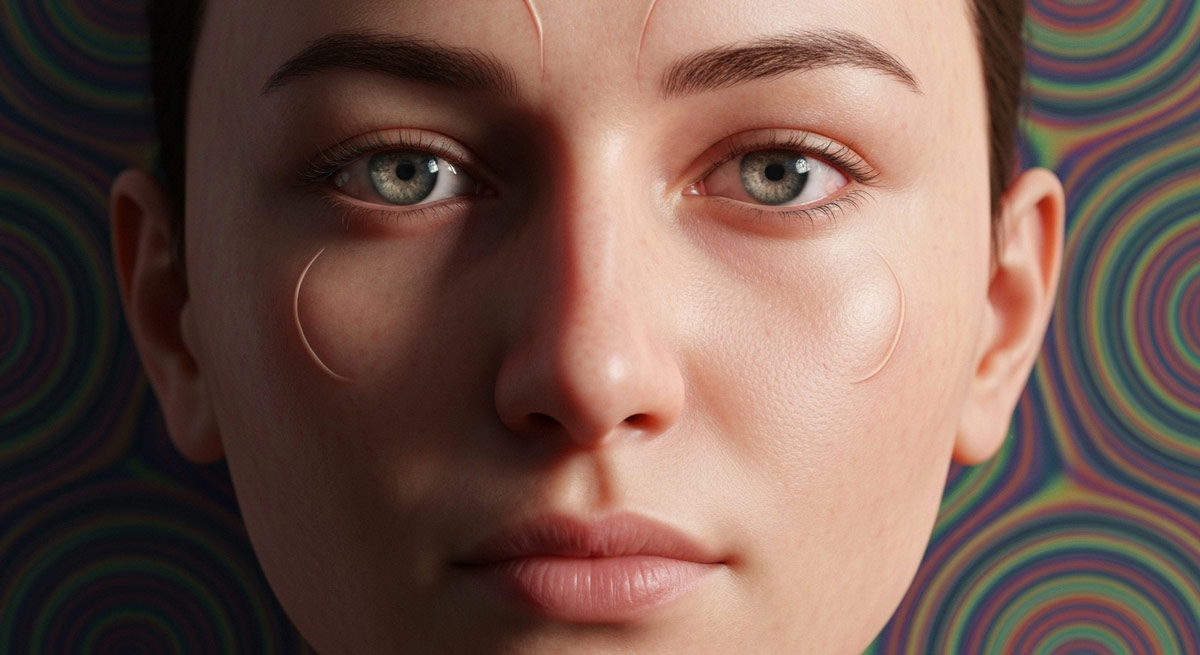Key Highlights
-
Artificial intelligence has made it hard to distinguish an AI image from real photos, but telltale signs exist.
-
Common flaws in AI-generated images include unnatural hands, malformed text, and lifeless facial expressions.
-
Backgrounds often reveal inconsistencies, such as repeating patterns, texture glitches, or blurred objects.
-
Learning the key signs of AI generation is crucial for verifying the authenticity of images you see online.
-
Using AI image detection techniques can help you spot fakes and maintain trust in digital content.
Introduction
The world of digital imagery is changing rapidly. With the rise of artificial intelligence, image generators can now create visuals that are almost indistinguishable from real photos. You may have already seen an AI image on the internet without even realizing it. This new reality makes it more important than ever to be discerning about the content you consume. This guide will walk you through seven key signs to help you identify AI-generated pictures and tell them apart from the real deal.
Understanding AI-Generated Images and Why Detection Matters
An AI image is created by a generative AI program, which uses complex algorithms to produce new visuals from text prompts. These image generation tools can create everything from fantasy artworks to photorealistic portraits that look like real images. The technology has advanced so quickly that it can be difficult to determine an image's origin.
Why does detecting AI-generated images matter? The primary reason is authenticity. As these images flood social media and news outlets, the ability to create convincing fakes threatens online trust. Verifying whether an image is real or artificial is key to combating misinformation and ensuring the imagery you see is genuine. This process of image processing and detection is vital in our digital age.
The Rise of AI in Digital Photography
Generative artificial intelligence has taken the digital world by storm. Powered by deep learning and vast neural networks, the modern AI engine can produce stunningly realistic images from simple text descriptions. These image generators learn from massive datasets of existing photos and art to understand what objects, textures, and lighting should look like.
However, there is a fundamental difference between how AI "sees" and how a camera captures the real world. At first glance, an AI image might look perfect, but the AI doesn't truly understand the context or physics of a scene. It is merely mimicking patterns it has learned.
This leads to subtle but important differences. A real photograph captures a single moment in time, obeying the laws of physics. An AI-generated image, on the other hand, is a reconstruction of data. This distinction is where you can start to find the clues that reveal its artificial origin.
The Impact of AI Images on Social Media and Online Trust
Social media platforms are saturated with images, but how many of them are real? The spread of AI-generated content, including convincing deepfakes, has started to erode online trust. When anyone can create a realistic image of an event that never happened, it becomes harder to believe what you see.
This is why the authenticity of images is a growing concern. Can social media images be trusted? The answer is complex. While many images are genuine, the potential for manipulation means you need to be cautious. Spotting fake AI pictures is no longer just a fun exercise; it's a necessary skill for navigating the modern internet.
Effective detection methods are essential for platforms and users alike to maintain a trustworthy online environment. By learning to identify the signs of AI generation, you can better protect yourself from misinformation and evaluate the credibility of the content you encounter.
Good Read: How Scammers Leverage AI Images For Growth On Social MediaQuick Checklist: Identifying AI Images at First Glance
Is there a checklist for identifying AI-created pictures? Yes, and it starts with a quick visual scan. At first glance, an AI image may look incredibly convincing, but a closer look often reveals its synthetic nature. Pay attention to the details that AI image generators commonly get wrong.
Look for inconsistencies in human features like hands and eyes, examine any text for legibility, and check the background for strange, repeating patterns. While not every AI image will have obvious flaws, these common giveaways are a great starting point for image detection and verifying authenticity. Learning these signs will help you spot fakes more effectively.
What Makes AI Photos Different From Real Photos
What is the difference between real and AI images at first glance? The core difference is that real photos capture reality, while an AI image mimics it. AI image generation relies on algorithms that piece together visuals based on learned data, but they don't understand the physical world. This often results in subtle inconsistencies that you wouldn't find in a real photograph.
These flaws often become more apparent the longer you look at the image. An image might look stunning initially, but closer inspection reveals errors that break the illusion of authenticity. The AI is good at the big picture but often fails on the fine details.
Some of the most common differences include:
-
Physical Impossibilities: Objects might defy the laws of physics, like reflections that don't match the source or shadows that fall in the wrong direction.
-
Incoherent Details: A teapot might have two spouts but no handle, or a person might be using the wrong tool for a task.
-
Unnatural Proportions: Limbs might be slightly too long, or the relative size of objects in a scene might not make sense.
Common Uses of AI Image Generators Online
AI image generators are not just for creating fakes; they are powerful tools for creators and artists. Platforms using generative AI, such as Midjourney, Stable Diffusion, and Adobe Firefly, allow users to create unique artworks, designs, and photorealistic scenes from text prompts. These deep learning techniques have unlocked new avenues for creativity.
Many artists use these tools to visualize concepts, generate background assets, or create entire digital paintings. The diffusion process, which gradually refines an image from noise, is a common technique used by generators like Stable Diffusion to produce high-quality results. However, this process can also introduce errors.
Do AI-generated images usually have specific flaws that real photos do not? Yes, because the AI is generating pixels, not capturing light. This can lead to the "telltale signs" that help in detection.
| AI Image Generator | Primary Use | Common Technique |
|---|---|---|
| DALL-E 2 | Creating artworks and photorealistic images from text. Visit Here >> | Diffusion Models |
| Stable Diffusion | Open-source tool for generating detailed imagery. Visit Here >> | Latent Diffusion |
| Midjourney | Popular for creating artistic and stylized images. Visit Here >> | Proprietary AI Models |
| Adobe Firefly | Integrated into Adobe for ethical AI image generation. Visit Here >> | Generative AI |
Key Sign #1: Facial Features and Expressions
When trying to spot an AI-generated image, the face is one of the first places you should look. Human faces are incredibly complex, and AI often struggles to replicate them perfectly. While AI has gotten much better at creating realistic portraits, a closer look at the facial features can reveal signs of AI generation.
Pay attention to the eyes, smile, and skin texture. These elements require a nuance that image generators often miss, leading to subtle but unnatural-looking results. What features should I look for in a face to spot an AI-generated image? The following sections will show you exactly what to check.
Odd Eyes, Unnatural Smiles, and Face Asymmetry
One of the most obvious signs that a photo is AI-generated can be found in the eyes. AI image generators often struggle with creating lifelike eyes, resulting in a "dead" or unfocused gaze. The pupils and irises might be misshapen, differently sized, or blurred in a way that doesn't look natural.
Face asymmetry is another clue. While real human faces are not perfectly symmetrical, AI can sometimes create distortions that feel wrong. A smile might look slightly off, or one side of the face might not quite match the other in a convincing way.
These inconsistencies are byproducts of the deep learning process, which is good at replicating general shapes but can fail on the intricate details. Here are a few things to look for:
-
Lifeless or unfocused eyes.
-
Misshapen or inconsistently sized pupils.
-
Unnatural or "plasticine" smiles.
-
Slight but jarring asymmetry in facial features.
Inconsistent Skin Textures or Hair Details
Beyond the eyes and mouth, skin texture offers another clue for AI image detection. What features should I look for in a face to spot an AI-generated image? Check the skin. AI-generated skin can sometimes appear unnaturally smooth and flawless, like it has been heavily photoshopped, giving it a "plasticine" quality.
Conversely, when AI tries to add details like freckles or wrinkles, it may do so in a repetitive, unnatural pattern. Instead of the random chaos you'd find on real skin, the texture might look like it was stamped on. A close look at the pixels can reveal these repeating patterns that are a giveaway of AI image processing.
Similarly, hair details can be a dead giveaway. Individual strands might blend together unnaturally, or the hair might have a strange, repeating texture instead of the random quality of real hair. These fine details are often overlooked by the AI, providing a clear sign that the image is not a real photograph.
Key Sign #2: Hands, Fingers, and Limbs
For a long time, the classic giveaway for an AI image has been the hands. Artificial intelligence struggles to generate hands correctly due to their incredible complexity and the near-infinite number of possible poses. While AI image generators have improved, hands and other body parts remain a common area for errors.
Do AI-generated images usually have specific flaws that real photos do not? Absolutely, and hands are a prime example. When you suspect an image might be a fake, zoom in on the hands and fingers. You will often find inconsistencies that generative AI missed, revealing its artificial origins.
Misaligned Fingers and Extra Limb Artifacts
What are the most obvious signs that a photo is AI-generated? Look at the fingers. It is very common for an AI image to feature hands with extra or missing digits. You might see a person with six fingers or a hand where fingers seem to blend together in an unnatural way.
These artifacts are a result of the image generation process. The AI understands the general concept of a "hand," but it struggles to render the fine details and complex anatomy correctly, especially when the hands are not the main focus of the image.
These inconsistencies aren't limited to just fingers. You might also spot other strange artifacts, like a person appearing to have a third arm or limbs positioned at impossible angles. These obvious errors are clear indicators that you are looking at artificial images created by an algorithm, not a camera.
Proportion Errors and Awkward Hand Poses
Beyond extra digits, AI-generated hands often suffer from proportion errors and bizarre poses. Do AI-generated images usually have specific flaws that real photos do not? Yes, and hand poses are a great example. A hand in an AI image might be positioned in a physically awkward or impossible way that no real person would hold.
The proportions of the fingers or the hand itself might also be slightly off. For example, fingers might be unusually long or short, or the entire hand might seem too large or small for the person's body. These may be subtle errors, but they contribute to a feeling that something is "off" about the image.
When performing a detection check on suspected fake images, look for:
-
Strange or physically impossible hand poses.
-
Fingers or limbs that are out of proportion with the rest of the body.
-
Hands that look distorted or malformed, especially when they are in the background or not a central part of the image.
Key Sign #3: Backgrounds and Repeating Patterns
While the subject of an image is often where you look first, the background can be just as revealing. Generative AI is good at creating a plausible scene, but it often fills in the background with details that don't hold up to scrutiny. How can I quickly tell if an image has been generated by AI? Check the background for oddities.
You might notice blurred or nonsensical objects, strange texture glitches, or unnatural repeating patterns. These errors occur because the AI is approximating what a background should look like rather than simulating a real environment. The next sections explore these background-related signs of AI generation.
Blurred or Incoherent Objects and Text
How can I quickly tell if an image has been generated by AI? One of the fastest ways is to look for text in the background. AI image generators are notoriously bad at creating legible text. They understand what text should look like as a shape, so they will generate patterns of pixels that resemble letters and words, but it's often just gibberish.
If you see a sign, a book, or any other object with writing in an image, zoom in. If the text is malformed, misspelled, or completely incoherent, it is a strong sign that you're looking at one of many artificial images. Real photos capture text perfectly, while AI can only imitate its appearance.
Beyond text, other objects in the background may appear blurred or oddly formed. The AI might create something that looks like a chair or a lamp from a distance, but upon closer inspection, the object's shape is nonsensical. These inconsistencies are clear indicators of AI image processing.
Good Read: Is AI The End Of Photography As We Know It?Pattern Duplication and Texture Glitches
What are the most obvious signs that a photo is AI-generated? Unnatural patterns are a big one. AI sometimes creates repeating patterns where you would expect randomness. For example, the texture of a wooden table, the fur on an animal, or the leaves on a tree might show a duplicated pattern, as if it was copied and pasted. This happens because the AI is approximating the texture rather than creating organic variations.
Conversely, AI can also create disorder where you would expect order. In an image with tiles, bricks, or other repeating geometric shapes, you might find that the lines are misaligned, broken, or deformed. A straight railing might suddenly become bent, or parallel lines might converge incorrectly.
These texture glitches and pattern duplication errors are a direct result of the deep learning process. The AI is mimicking reality, not truly understanding it. A careful detection of these details is an effective way to identify artificial images and separate them from real photographs.
Conclusion
In conclusion, being able to identify AI-generated images is increasingly important in today's digital landscape. By recognizing the key signs such as facial features, hand details, and background inconsistencies, you can enhance your ability to distinguish between real and artificially created visuals. This skill not only bolsters your personal knowledge but also fosters a more trustworthy online environment. Stay vigilant and informed, and remember that with the rise of AI technology, discernment is crucial in maintaining integrity in our visual experiences. If you have questions or want to delve deeper, feel free to reach out.
GOOD READ: Who's Better at Spotting Fakes: Humans or Machines?Frequently Asked Questions
Are AI image detectors more reliable than manual inspection?
Automated AI image detection tools, which often use custom ML models, can achieve high accuracy. However, they are not foolproof and can produce false positives. Manual inspection, guided by the telltale signs discussed here, remains a very effective method. Combining both can provide the most reliable results for image detection.
Can online tools help me spot AI-generated images instantly?
Yes, tools are being developed to help with AI image detection. Some AI image generators are adding invisible watermarks or metadata to their creations, which can be read by specific online tools or an API. While a single, universal detector doesn't exist yet, the technology is rapidly evolving.
How do popular platforms like Google identify AI-generated content?
Platforms like Google are developing sophisticated methods for AI generated image detection. One approach is through tools like SynthID, which embeds a permanent, invisible watermark into the pixels of an AI image. They also use deep learning models to analyze images for signs of artificial generation based on their metadata and visual characteristics.
Simple Chart For Spotting AI Images Like A Pro At AiorNot.US



